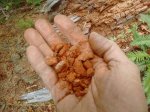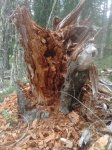SU2
Omono
I've only been in this hobby a year so my substrate mix has been ever-changing, I've been moving away from diatomaceous earth granules to perlite as my main ingredient, and have always been using ~15% other stuff (<5% tan sphagnum, ~10% lava rock + bark-chips) to change the properties a bit, anyways I recently read about how impure many of the wood-chip mulches are (stuff like construction lumber (pressure treated) that's further treated before getting bagged, and I don't just mean the dyed-color types!), so I've stopped using wood chips of any sort and am now using only lava rock, am hoping to find if there's any concern about the quality/purity of the lava rock you'd get when buying it by the bag (the stuff I get doesn't say 'mulch' it's just a ~30lbs sack that says 'red lava rock', I smash them and screen/sieve them, then rinse and use the multiple grades/sizes for various things from big ones at the bottoms of my containers, medium ones as top-dressing/mulch, and smallest ones in the substrate mix itself)
Am actually hoping to switch to spherical hydroponic media soon, still just learning about it though, and have been using lava rock more and more the past month so want to be sure it's not known for some problem I'm unaware of! Thanks
Am actually hoping to switch to spherical hydroponic media soon, still just learning about it though, and have been using lava rock more and more the past month so want to be sure it's not known for some problem I'm unaware of! Thanks



